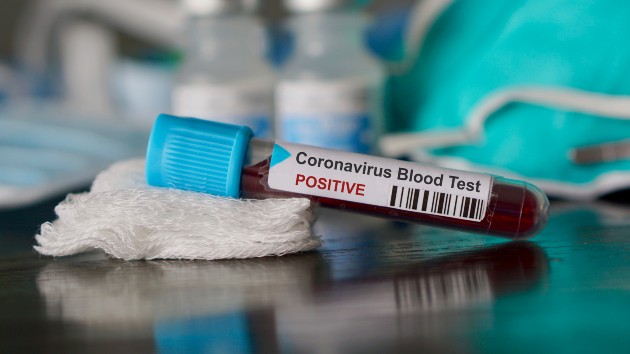COVID live updates: South Africa variant likely spreading in US, CDC director says
Samara Heisz/iStockBy MORGAN WINSOR, ERIN SCHUMAKER, EMILY SHAPIRO and IVAN SHAPIRO, ABC News
(NEW YORK) — A pandemic of the novel coronavirus has now infected more than 101.5 million people worldwide and killed over 2.1 million of them, according to real-time data compiled by the Center for Systems Science and Engineering at Johns Hopkins University.
Here’s how the news is developing Friday. All times Eastern:
Jan 29, 11:59 am
Limited indoor dining can resume in NYC on Valentine’s Day
Indoor dining will return to New York City on Valentine’s Day at 25% capacity, New York Gov. Andrew Cuomo said Friday.
Indoor dining was shut down in New York City in December.
On March 15, in-person weddings can resume in New York at 50% capacity, or up to 150 people, he said.
Jan 29, 11:00 am
US numbers still high but trends are encouraging: CDC experts
Dr. Jay Butler, Deputy Director for Infectious Diseases with the Centers for Disease Control and Prevention, said the U.S. has seen a decline in the last two weeks of new cases and hospitalizations, which is “encouraging,” but he added, “the numbers nationally are still high.”
“The pandemic is not yet over yet,” Butler told the Infectious Diseases Society of America on Friday. “By the time we end our 45 minutes together, roughly 100 more Americans will have died of COVID-19.”
Butler stressed that the vaccines are safe and effective and that mild side effects are normal.
“The available data tells us that more than half of people have reported some degree of tiredness and pain at the injection site, although most are able to continue normal daily activities,” Butler said. “Many also report symptoms such as headache muscle pain or chills after getting their shots, particularly in the first couple of days. These data also suggest that it may be more common among younger persons, and after the second dose, but again this is expected based on some of the data that were available from the clinical trials.”
Jan 29, 10:47 am
EU approves AstraZeneca
AstraZeneca’s vaccine on Friday was recommended for conditional marketing authorization in the European Union for people 18 and older. The two doses should be administered four to 12 weeks apart.
This is the third vaccine, following Pfizer and Moderna, to be approved by the European Medicines Agency. The AstraZeneca vaccine now awaits final say from the European Commission.
Jan 29, 8:43 am
J&J single-shot vaccine 85% effective against severe COVID-19 disease
In another promising development for vaccine science, Johnson & Johnson announced Friday that its COVID-19 vaccine — a single shot tested against a complex barrage of newly emerged variants of the virus — is 66% effective at preventing symptomatic disease and 85% effective against preventing severe illness.
The U.S. pharmaceutical giant said the vaccine is also safe to take. Volunteers experienced mild reactions after the shot, with less than 10% experiencing fever, according to a company press release.
The full data package will be made publicly available and will be evaluated by the Food and Drug Administration’s advisory committee sometime in mid- to late February.
The FDA has said it will consider a vaccine that’s more than 50% effective, and the Johnson & Johnson vaccine exceeds this threshold. An emergency use authorization could be given and people could start receiving shots before the end of February.
Jan 29, 8:26 am
‘We should be treating every infection as if it’s a variant,’ CDC director says
Americans should now assume there’s already more contagious variants of the novel coronavirus circulating in their communities, according to Dr. Rochelle Walensky, director of the Centers for Disease Control and Prevention.
“I think we should be treating every infection as if it’s a variant,” Walensky told ABC News chief anchor George Stephanopoulos in an interview Friday on Good Morning America.
“That is the way we’re going to control this pandemic,” she added. “Quite honestly, we know that these viruses are going to mutate. They generally mutate to the advantage of the virus and that’s how we get these more dominant strains.”
Walensky’s remarks come a day after the United States confirmed its first cases of the B1351 variant, which was first identified in South Africa and has since spread to dozens of other countries.
“We had always been worried that they were here and we hadn’t yet detected them,” she said.
The B1351 variant was discovered in two people in South Carolina who were not in contact with one another and haven’t traveled recently, which concerns Walensky.
“So the presumption is here that they became infected from other people in the community and that there’s community spread of this variant,” she said.
Walensky explained that it “takes a while” for scientists to detect a variant.
“From the time of symptoms to somebody getting a test to that test being positive and to us being able to sequence it, that turnaround time could be up to 10 to 14 days,” she said.
Although the CDC has “done an enormous amount of scaling up of our surveillance of these variants,” Walensky said researchers are essentially starting from the ground up because “there has not been a public health infrastructure to track these variants.”
“There has not been money, resources to be able to do mass sequencing at the level of infection that we have in this country right now,” she said. “That is part of the American Rescue Plan, is to be able to use resources to finance a mass scale-up of surveillance for these variants.”
There are concerns that the variants wield increased transmissibility and mortality, or that existing treatments and vaccines won’t work as well against them.
“The current vaccines we’re still studying against these variants,” Walensky said. “What I will say though is we have a 95% efficacious vaccine against the current strain. Even if we have some diminution of that efficacy against the South Africa strain, I still think we need to really go ahead, push the vaccination, because this just is still yet another tool in our toolbox to fight this pandemic.”
Jan 29, 7:24 am
Russia says it can supply Europe with 100 million doses of its vaccine
Russia said Friday it will be ready to supply Europe with enough doses of its COVID-19 vaccine, Sputnik V, for 50 million people in the second quarter of this year.
The Russian Direct Investment Fund (RDIF), which is responsible for worldwide marketing of the vaccine, announced via Twitter that 100 million doses can be provided to the European Union — pending regulatory approval — once most of Russia’s population has been vaccinated.
After being developed by the state-run Gamaleya Research Institute of Epidemiology and Microbiology in Moscow, Sputnik V was controversially registered by the health ministry in August before starting crucial Phase 3 trials, with Russia declaring itself the first in the world to register a COVID-19 vaccine.
The RDIF said the vaccine is now registered in 15 countries and that documents have been submitted to the European Medicines Agency (EMA) for “rolling review,” which would mean that the drug regulator is reviewing clinical trial data on a rolling basis. However, last week, the EMA said in a statement that “currently Sputnik V is not undergoing a rolling review.”
Jan 29, 6:25 am
Mexico overtakes India for third-highest COVID-19 death toll
Mexico now has the third-highest death toll from COVID-19 in the world.
According to real-time data compiled by Johns Hopkins University, Mexico has registered 155,145 fatalities from the disease since the pandemic began, overtaking India’s count of 154,010 deaths.
Mexico, a country of 127 million people, has confirmed more than 1.8 million cases of COVID-19. Whereas India, home to some 1.3 billion, has confirmed over 10.7 million cases, the second-most in the world, according to Johns Hopkins data.
Jan 29, 3:49 am
US reports over 164,000 new cases
There were 164,665 new cases of COVID-19 confirmed in the United States on Thursday, according to a real-time count kept by Johns Hopkins University.
Thursday’s case count is far less than the country’s all-time high of 300,282 newly confirmed infections on Jan. 2, Johns Hopkins data shows.
An additional 3,872 fatalities from COVID-19 were registered nationwide on Thursday, down from a peak of 4,466 new deaths on Jan. 12, according to Johns Hopkins data.
COVID-19 data may be skewed due to possible lags in reporting over the Martin Luther King Jr. Day holiday weekend.
A total of 25,766,735 people in the U.S. have been diagnosed with COVID-19 since the pandemic began, and at least 433,195 have died, according to Johns Hopkins data. The cases include people from all 50 U.S. states, Washington, D.C., and other U.S. territories as well as repatriated citizens.
Much of the country was under lockdown by the end of March as the first wave of the pandemic hit. By May 20, all U.S. states had begun lifting stay-at-home orders and other restrictions put in place to curb the spread of the novel coronavirus. The day-to-day increase in the country’s cases then hovered around 20,000 for a couple of weeks before shooting back up over the summer.
The numbers lingered around 40,000 to 50,000 from mid-August through early October before surging again to record levels, crossing 100,000 for the first time on Nov. 4, then reaching 200,000 on Nov. 27 before topping 300,000 on Jan. 2.
So far, the U.S. Food and Drug Administration has authorized two COVID-19 vaccines for emergency use — one developed by U.S. pharmaceutical giant Pfizer and its German partner BioNTech, and another developed by American biotechnology company Moderna and the National Institute of Allergy and Infectious Diseases. More than 24 million vaccine doses have been administered nationwide, according to the latest data from the Centers for Disease Control and Prevention.
Copyright © 2021, ABC Audio. All rights reserved.

